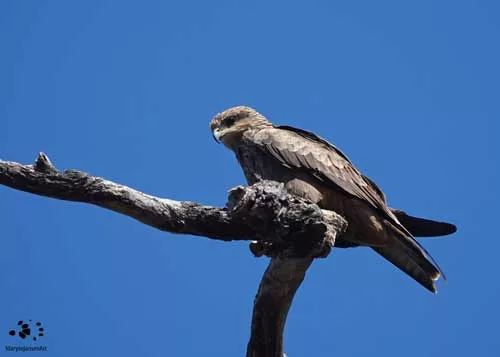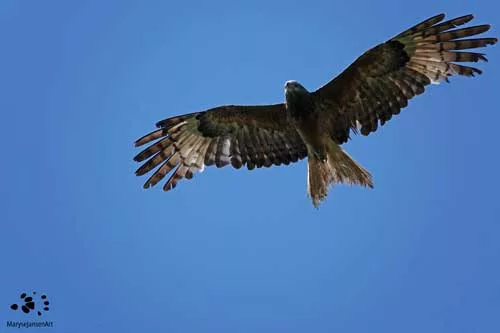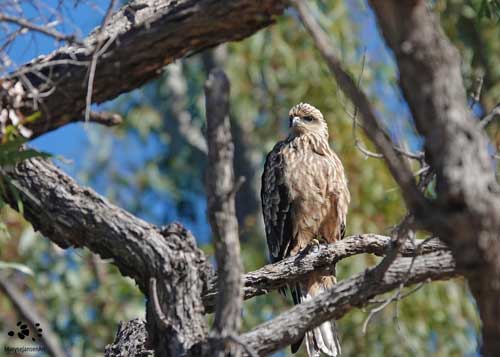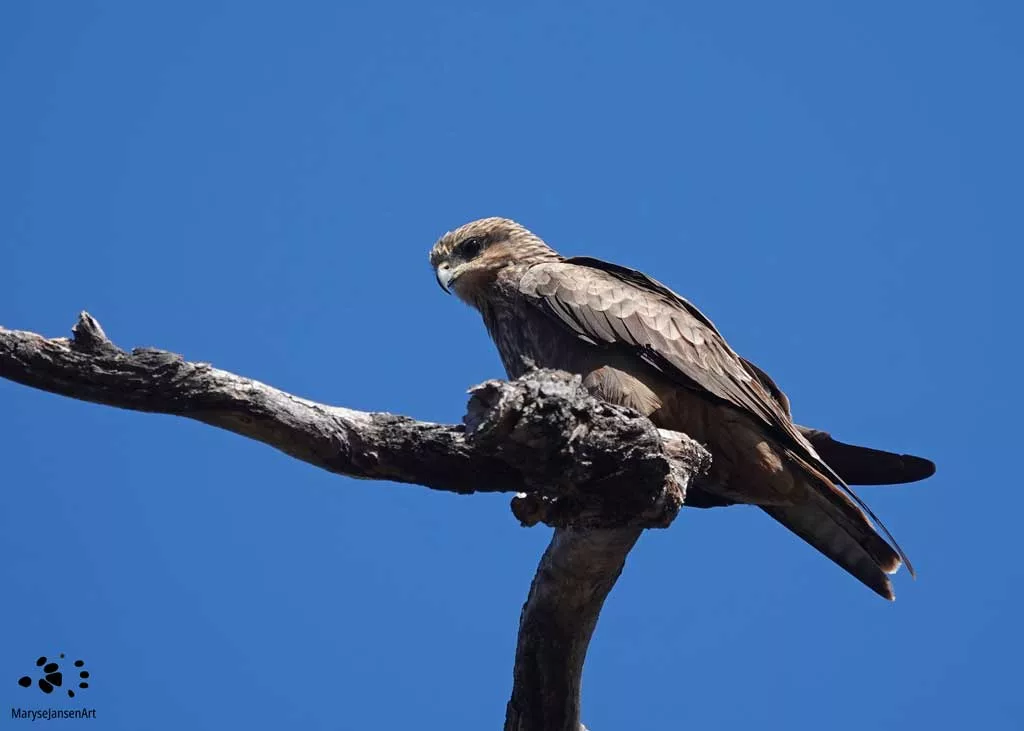Bird Photography with marysejansenart
The only Australian Raptor that flocks

Table of Contents
Black Kites actively use fire in their hunt
Birds of prey are circling in the smoke haze around the edge of the fire. These are Black Kites and they are acutely aware that the smoke will drive out potential prey, which will be instantly at their mercy. This easy source of food has led these intelligent raptors to actively seek out the smoke from bush fires in the landscape. And on top of that they have also figured out how to spread the fire themselves. These birds have been seen picking up burning twigs and dropping them in other areas! No wonder the Black Kite is also known as the Firehawk!
Actually, there are two other raptors in Australia that display similar behaviour and are also referred to as Firehawks: the Whistling Kite and the Brown Falcon. Aboriginal Peoples have known about these behaviours for thousands of years and have shared their knowledge so that the rangers that currently undertake fire management can take these birds’ behaviours into account. Read more about controlled burns and bushfires here.
Black Kite is the only Australian raptor that flocks
Back to the Black Kite. While this bird is generally uncommon, it is probably the most numerous raptor in the world. Those that live in colder areas will migrate to the tropics in winter, while those that live in warmer areas are residential. They can be found across most of Australia, with less numbers in the south-west. Black Kites occupy a wide range of habitats, with a preference for timbered waterways and open plains.
While I have seen an occasional Black Kite in south-east Queensland’s bush lands, they are definitely much more abundant in the open spaces of the outback. I have often spotted large flocks during my travels there. This bird is the only raptor in Australia that flocks. You may see them circling in the air, particularly in the early morning or late afternoon which is when they prefer to hunt. When resting, the flock will occupy the branches of one or more trees.
Feeding on plagues, carrion and scraps
It is mid morning and I am having a short break from my drive. I have stopped in a small country town to stretch my legs. There is a lovely walkway along the river here so I follow that trail. Ahead, I spot some raptors circling and I quickly identify them as Black Kites. When I get closer, I spot more birds in a small copse of trees on the river bank. The circling birds hover over the river, using the thermals in the air, and then come back to perch on the tree. In the meantime a few others have taken flight. There appears to be a continuous rotation schedule!

They don’t seem to be disturbed by the presence of me and my camera so I can take a little bit of time to get some shots and some footage of these striking birds. I don’t see them catching anything but I know they prey on a range of small animals, including their favourites the house mouse and grasshoppers, as well as fish, birds, lizards and rodents. Both the house mouse (which is an introduced species in Australia) and grass hoppers are species that can multiply quickly under the right circumstances and become plagues. This is when the Black Kites come to feast on them.
The Kites are able to catch their prey with their sharp talons by pouncing on them on the ground or by grabbing them from the air. While they do hunt for live prey, they are also scavengers. They clean up carrion and are known to look for scraps on the tips in outback towns.
A forked tail and dark brown appearance
The sun is quickly gaining in strength, the Kites are settling on the trees for a rest and it is time for me to recommence my journey. It was truly an amazing encounter that I had not foreseen during this short stopover! The birds have a dark brown plumage. There are also some juveniles in this flock with have a more streaked appearance.
The head, neck and underparts have some lighter brown and rufous markings. There is a dark patch behind the dark eye. They have a forked tail, which is why they are sometimes referred to as Fork-tailed Kite. The sharp bill is black at the tip and yellow around the nostrils. Similarly, the legs are yellow, while the claws are black.

Breeding habits
Black Kite breeding season runs from June to December. As with other raptors, courtship involves some aerial acrobatics. Loud calling, grappling of the talons and tumbling or cartwheeling may be seen. A basket nest is build with sticks by the male and female together, they line it with soft materials. The nest is build in the fork of a tree.
A clutch of about 3 eggs is incubated by the female, while the male brings her food. It takes about 4 weeks until the chicks hatch. They stay in the nest for just over a month and both parents feed them and guard the nest from intruders. At two years of age, the birds are mature and able to reproduce.
Join me on my encounter with the flock of Black Kites and watch this bonus episode of ‘Come for a walk in the Australian Bush’:
If you are interested in purchasing a print of ‘Black Kite’ or would like to see what the image looks like on the various merchandise products, please head to my shop. If you prefer ‘Black Kite Soaring Overhead’, click shop here and for ‘Black Kite Perched’, click here.


